Ergonomics and regulatory politics: the Washington State case

American Journal of Industrial Medicine
2007
50
5
391-401
ergonomics ; occupational health ; OSHA
Ergonomics and work environment
English
Bibliogr.
"Background Every year in the State of Washington more than 50,000 workers experience a work related musculoskeletal disorder (WMSD), making up more than 30% of all worker compensation cases. In 2000, the Washington State Department of Labor and Industries (L&I) adopted a workplace ergonomics rule requiring employers to reduce worker exposure to hazards that cause or contribute to WMSDs. In 2003, the ergonomics rule was repealed by a margin of 53.5-46.5 in a statewide voter initiative. Methods The official rulemaking record of approximately 100,000 pages, along with supplementary published and unpublished material, was reviewed. The relationship between scientific deliberation and the public policy process in adopting and repealing the ergonomics rule was assessed and described. The deliberative features of the regulatory, judicial, legislative, and ballot processes were compared. Results and Conclusions The ergonomics rule was successful in the regulatory and legal arenas where the process was most transparent and open to public involvement, differing views could be presented fully, and decision makers were expected to explain their decisions in light of the record. The rule fared most poorly in the legislature and at the ballot box when these features were lost and where considered deliberation was replaced by unconstrained political conflict. Additional checks and balances are needed. Am. J. Ind. Med. 50:391-401, 2007. © 2007 Wiley-Liss, Inc "
Digital
The ETUI is co-funded by the European Union. Views and opinions expressed are however those of the author(s) only and do not necessarily reflect those of the European Union or the ETUI.